 |
 |
 |
| |
IDENTIFICATION OF UNIQUE PROTEINS PREDICTIVE OF MORTALITY AND MECHANISMS IN HIV
|
| |
| |
CROI 2021 March 6-10 Reported by Jules Levin
Priscilla Hsue1, Peter Ganz1, Mark Segal1, Janet P. Tate2, Hilary A. Tindle3, Kaku So-Armah4, Amy Justice2, Matthew Freiberg3
1University of California San Francisco, San Francisco, CA, USA, 2Yale University,
New Haven, CT, USA, 3Vanderbilt University, Nashville, TN, USA, 4Boston University, Boston, MA, USA
Importance of this talk for PLWH - proteomic approach allows for the following: we still don’t understand mechanism of increased mortality in HIV and risk calculator in HIV do not perform well:
1. Identification of novel risk predictors for mortality in HIV
2. Identification of biologic pathways that are unique in HIV with the hope of identifying novel therapeutics (ie on top of known risk factors ie cd4 count in HIV, VL) or traditional risk factors (HTN, etc in the general population)
3. In the future development of dynamic risk models for personalized health decisions
4. Ability to monitor impact of therapies and lifestyle interventions over time
We know that traditional risk factors and chronic inflammation (ie things that we know about) do contribute to mortality in HIV. But we d not know all the factors that contribute to mortality in HIV, and the proteomic approach includes things we don’t know about - ie are there novel mechanisms or pathways in HIV that contribute? This research group was surprised that the proteins predicted mortality better than CD4 count, cd4 nadir or HIV viral load which are factors we know are strongly predictive of mortality in the HIV population
the proteins reflect biology and also can be targets for therapies in both HIV and non HIV. It is believed that HIV infection may somehow alter the biology of mortality which is being reflected in the protein measurements. They are unlike genes in that they change and thus they reflect both nature and nurture - they can reflect environment, lifestyle, age, comorbidities, HIV meds, and unknowns.
Background: Risk prediction tools in HIV are limited by their focus on known pathways. In contrast, proteins orchestrate human biology in health and in disease and be used to individualize risk assessment as well as identify new potential therapeutic targets. We thus applied large-scale proteomics to: (i) identify new biomarkers that can inform disease biology and (ii) develop proteomic risk models predictive of all-cause mortality among HIV+ individuals.
Methods: The Veterans Aging Cohort Study Biomarkers Cohort (VACS BC) is a longitudinal cohort of veterans with and without HIV. We measured plasma levels of 4926 proteins in all 1524 HIV+ VACS BC participants using aptamers (SOMAscan® assay). Univariate associations of proteins with mortality were assessed by Cox proportional hazards and attendant p-values and q-values (false discovery rates; FDR). Multivariate modeling of mortality based on proteins, both with and without adjustment for clinical, demographic and biomarker variables, was performed using the elastic net. The VACS BC cohort analysis was divided into derivation (80%) and validation (20%) datasets.
Results: We analyzed plasma samples of 1524 HIV+ veterans collected in 2005-2006. The average age was 52 years, 97% were male, the median CD4 count was 399 cells/mm , and 66% had an undetectable viral load. From 2005 FDR of 5%, 48% of proteins were associated with mortality outcomes. The log-2 hazard ratios (HRs) and levels of significance for the top 10 prognostic proteins are listed in the Table below. In the construction of the risk model via cross-validation, the elastic net (with the 1 standard error rule) selected 9 prognostic proteins: GNPTG, SVEP1, WFDC2, ADAMTSL1, EGFR, PROC, SET, SPON2 and EFEMP1. The c-statistic for the 9-protein model was 0.72 in the derivation set and 0.71 in the validation set, results not meaningfully altered by allowing for inclusion of CD4, nadir CD4 count, HIV RNA levels, age, and VACS score.
Conclusion: Using large-scale proteomics, we identified numerous unique proteins predictive of mortality in HIV. A risk score based on 9 proteins provided moderately good discriminative accuracy, despite heterogeneous causes of death in this population; furthermore, this protein risk score was more predictive than direct measures of HIV infection or age. The large number of prognostic proteins identified will serve as the basis of future pathway and network analyses.
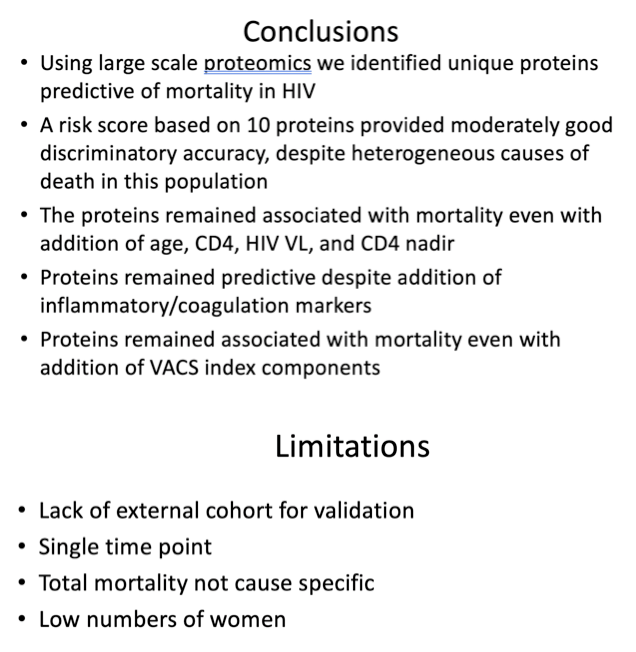

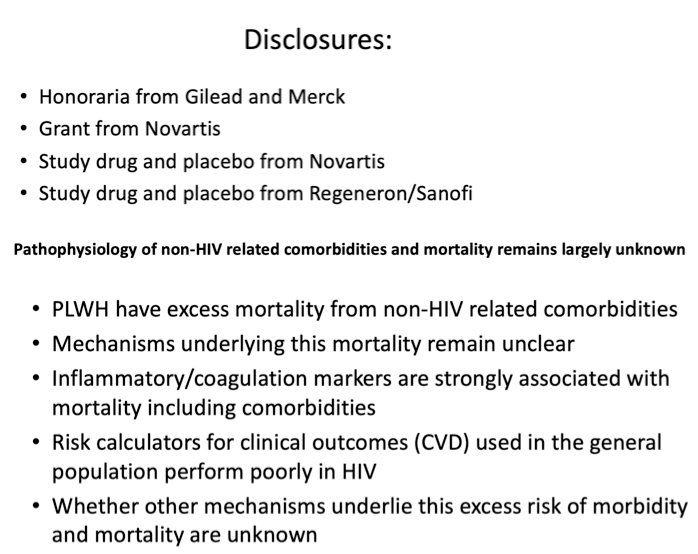
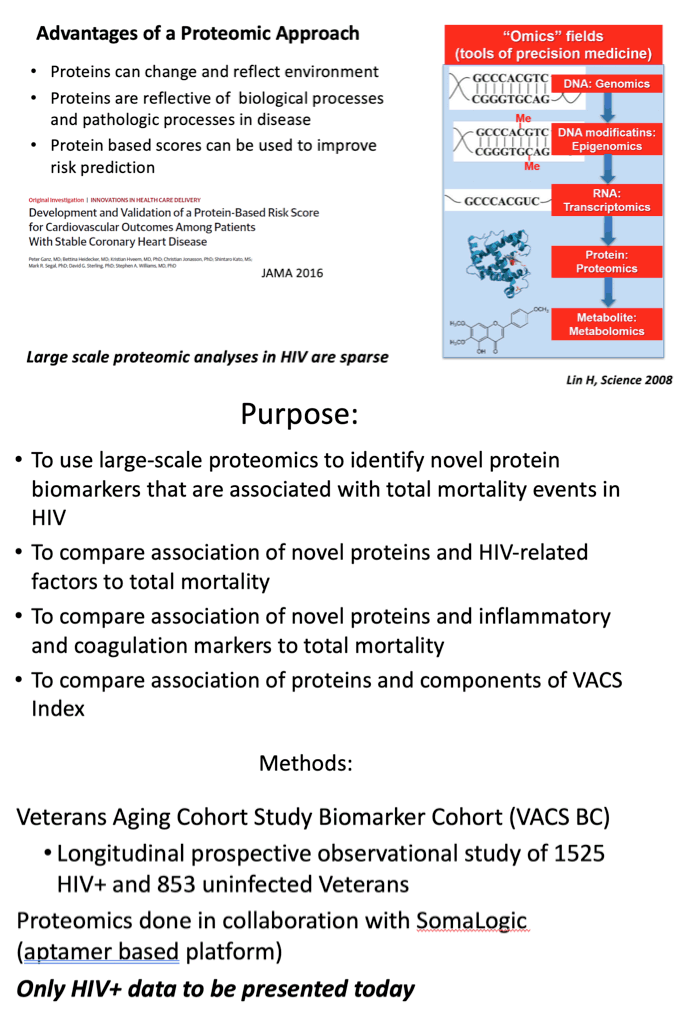
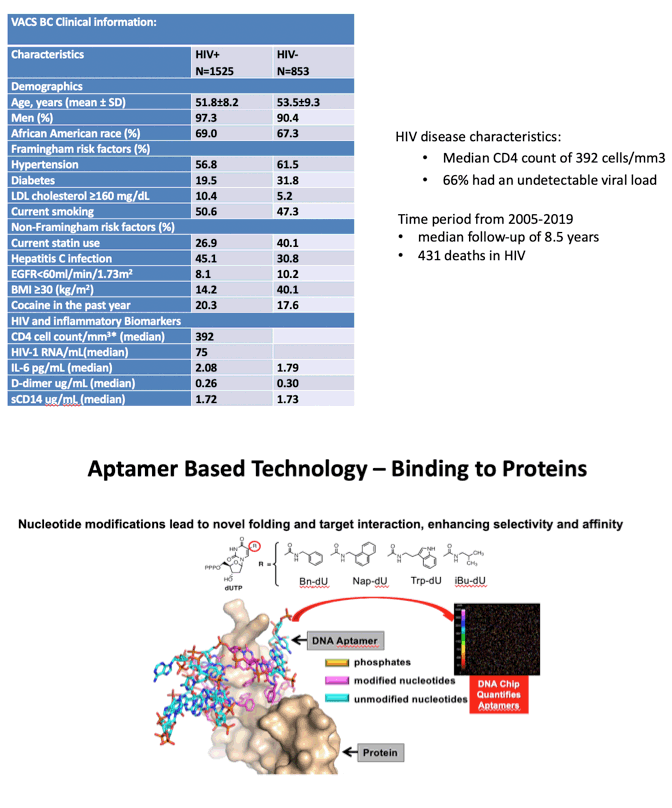
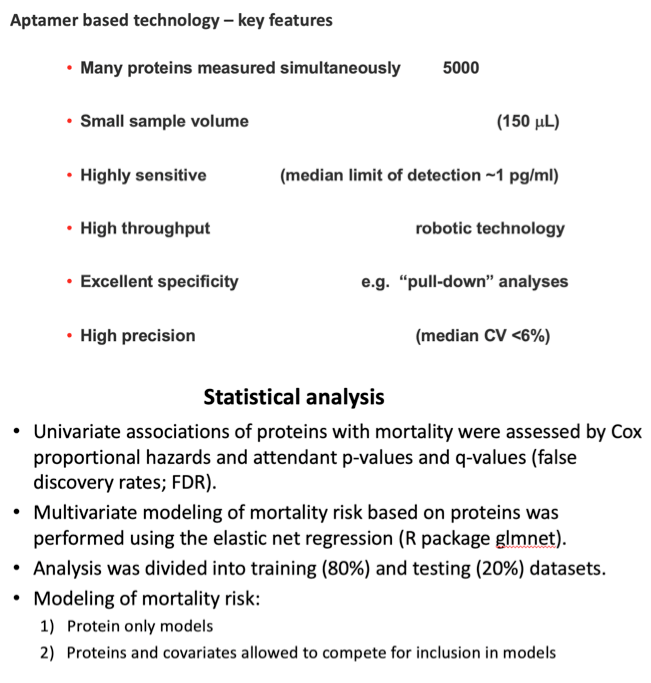
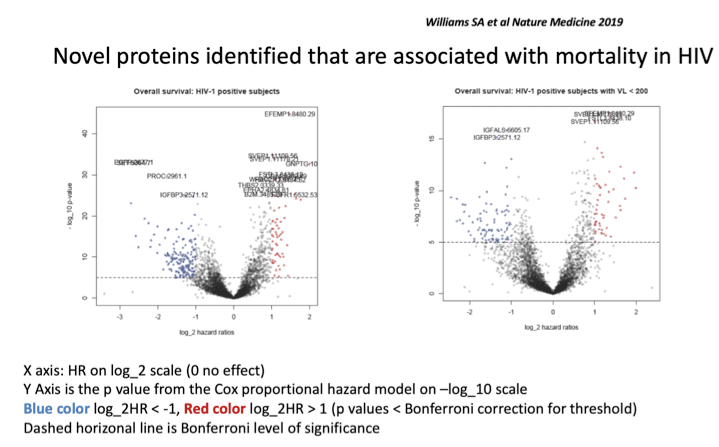
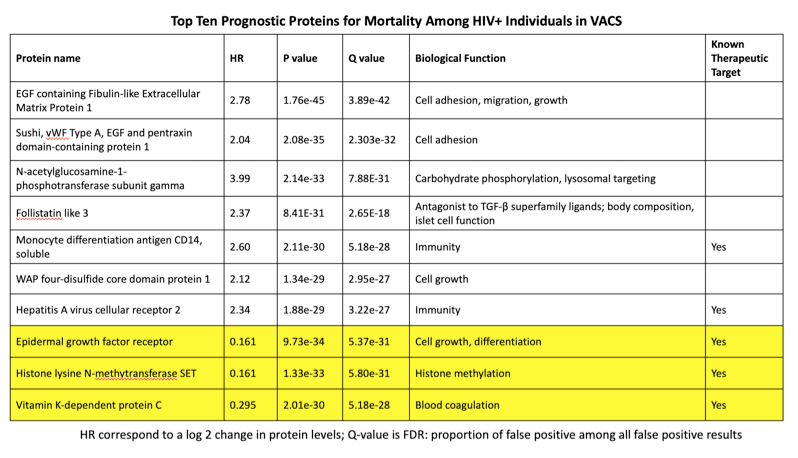
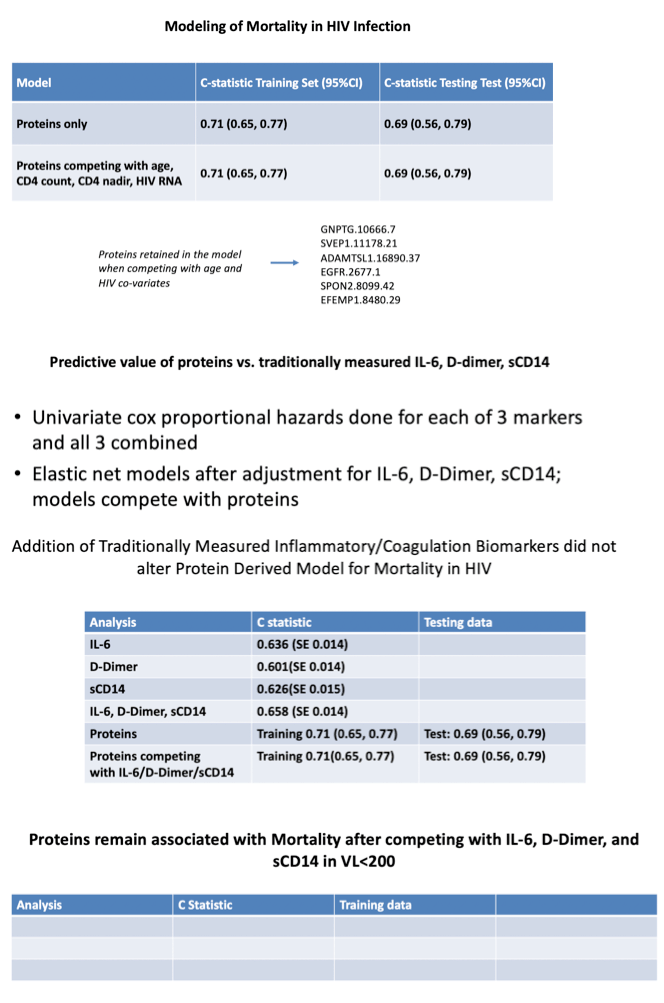
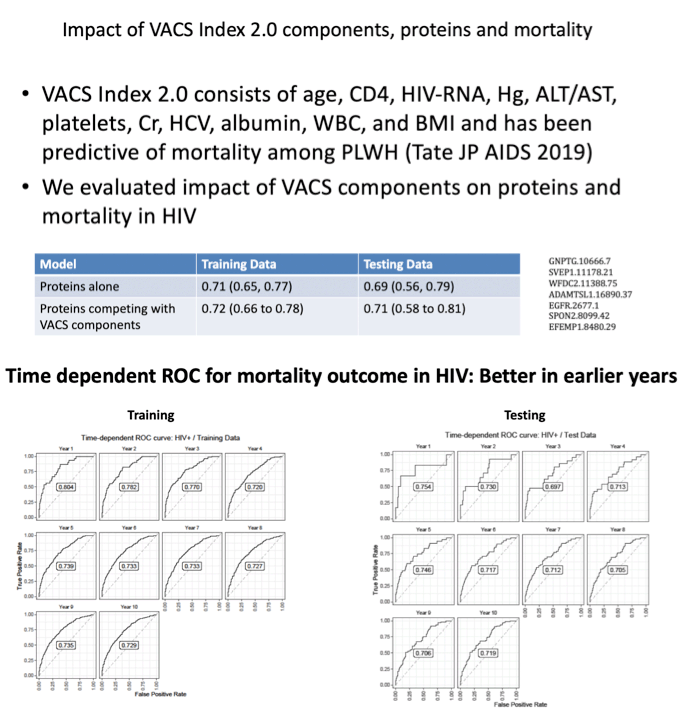
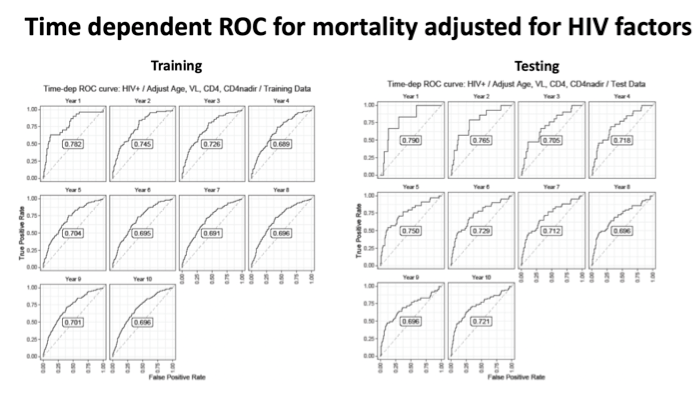
|
| |
|
 |
 |
|
|